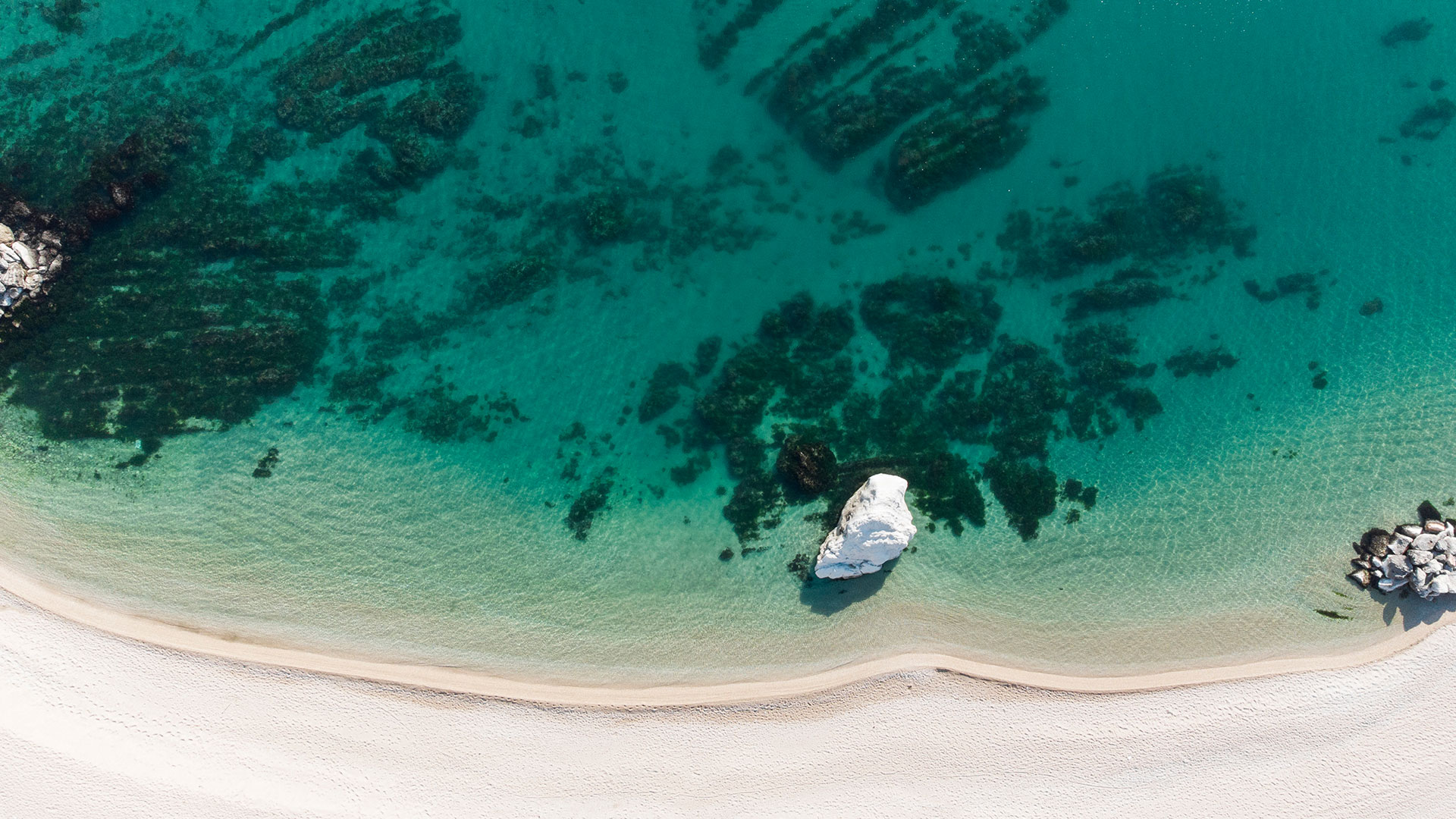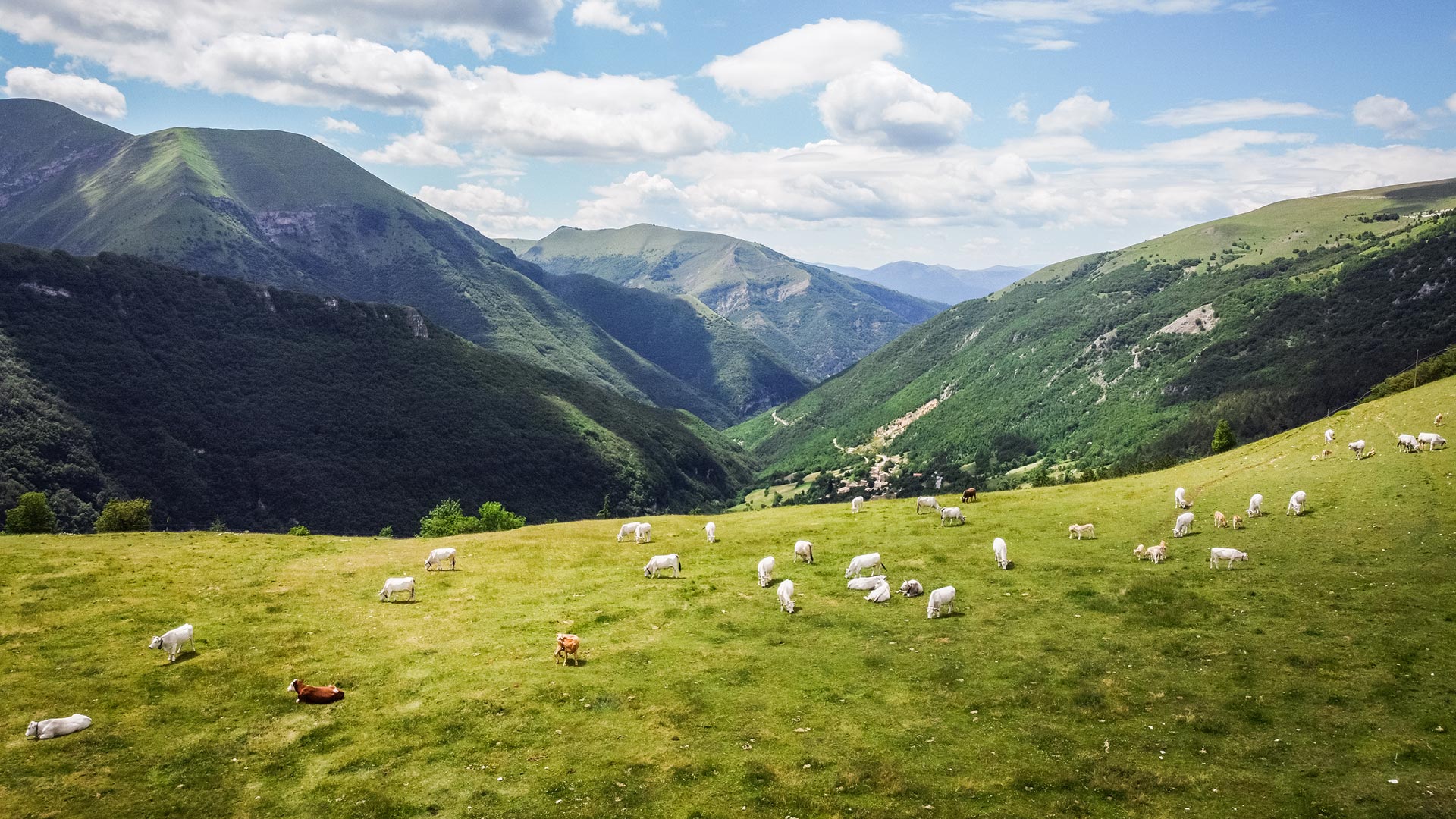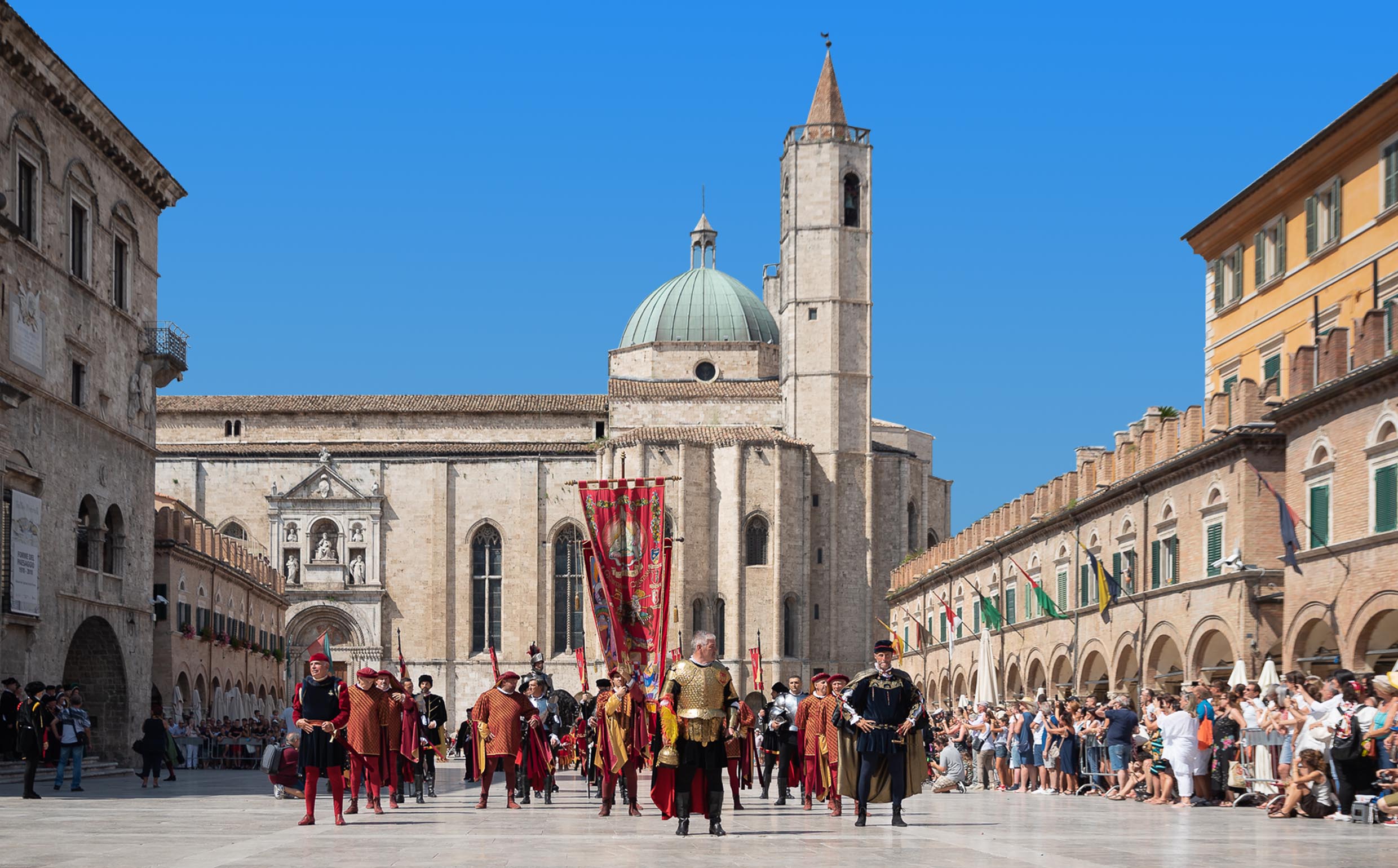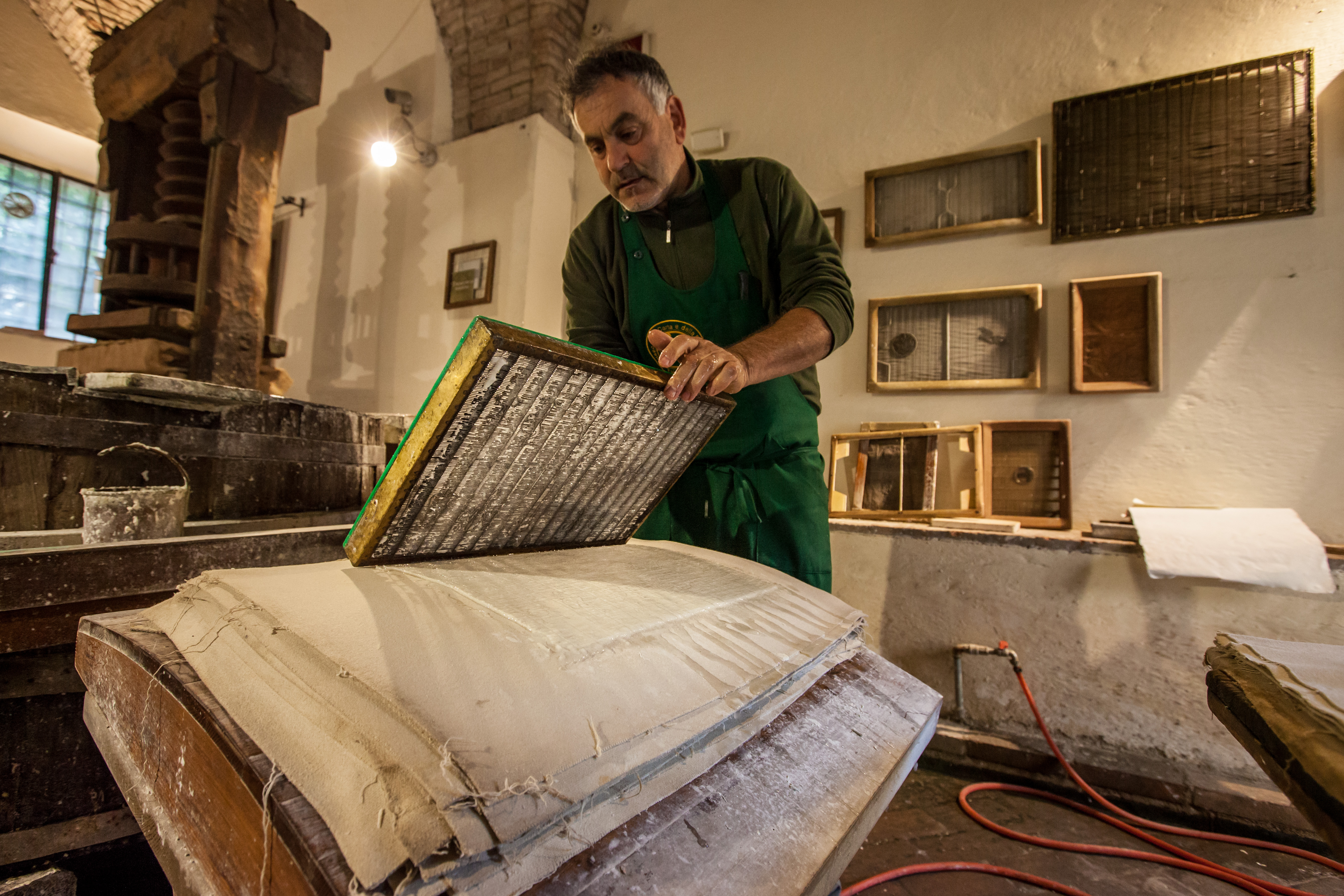The sea - Marche Tourism
The marvels of nature
Index
All the provinces of the Marche are on the Adriatic Sea and, on the coast, there are cities with ancient origins that have a long history as ports and markets. For travellers arriving from Rome along the Via Flaminia, the first town they reached on the sea was Fano; Senigallia – at the mouth of the River Misa – hosts the Fiera di Sant’Agostino, a traditional fair which renews the age-old mercantile vocation of the city; originally a Picene port, Ancona later became a Greek and a Roman one; Numana was a rich Picene port, as well as Porto Sant’Elpidio and San Benedetto del Tronto, two coastal towns in the province of A sco li Piceno and Fermo, were important Picene and Roman ports. Many of the coastal towns of the region are still active ports: Ancona is a large commercial port, while San Benedetto del Tronto, Fano, Civitanova Marche and Porto San Giorgio are the main fishing ports. This proximity to the sea has favoured the development of an excellent cuisine in the region and has led to the growth of the tourist industry since sea-bathing first came into vogue among the upper middle classes in the mid-19th century. In the course of time, bathing establishments, sports facilities and hotels were built in the seaside resorts of the Marche, which, particularly after the Second World War, have welcomed millions of visitors from Italy and abroad. The coast of the Marche has numerous attractions for visitors, but the greatest of all are the fine, smooth sands, extending from Gabicce Mare, where the beach is overlooked by the Monte San Bartolo and the fortress of Gradara, southwards to Pesaro, Fano, Marotta, Falconara M., Porto Recanati, Porto Potenza Picena, Civi tanova Marche, Porto Sant’Elpidio, Casabianca di Fermo, Pedaso, Porto San Giorgio, Cupra Marittima and Grottammare up to San Benedetto del Tronto, famous for its many tall palm-trees (about seven thousand), which lend the town an exotic air. Known as “the velvet beach”, the one in Senigallia is particularly famous and has been a tourist attraction since the 20th century. Near Ancona and the promontory of Conero, an offshoot of the Apennines forming the only headland jutting into the Adriatic between Istria and the Gargano promontory in Apulia, there are rocky coves where the seabed is visible through the clear blue water. On this stretch of coast there are hidden bays and the enchanting seaside resorts of Portonovo, Sirolo and Numana, which also attract visitors in spring, when Monte Cone ro is covered with broom, and the autumn, when it is mantled with the warm colours of the strawberry tree (arbutus unedo).
-
Towns and villages looking out over the sea
From the beaches of the Marche it is easy to travel inland up the numerous valleys to the historic towns, or to visit the old towns and villages on the heights overlooking the coast. There are medieval castles like Gabicce Monte, Casteldimezzo and Fiorenzuola di Focara and fortified villages like Mondolfo with Marotta, Falconara Alta with Falconara Marittima, Montemarciano with Marina di Montemarciano, Sirolo, Numana, Recanati with Porto Recanati, Potenza Picena with Porto Potenza Picena, Civitanova Alta with Civitanova Marche, Sant’Elpidio a Mare with Porto Sant’Elpidio, Porto San Giorgio with the Marina, Fermo with Torre di Palme, Cupra Alta (or Marano) with Cupra Marittima, Grottammare Alta with Grottammare and San Benedetto del Tronto with the Gualtieri tower.
-
Parks by the sea
The two regional nature parks on the coast of the Marche provide an opportunity to spend a holiday combining the joys of an unspoilt natural environment with the pleasures of the seaside. Between Gabicce Mare and Pesaro there is the Monte San Bartolo Regional Park, where it is possible to go for hikes and guided tours. The park comprises an area of wetlands of national importance and is the winter habitat of the herring gull, the Mediterranean gull and the cormorant. On the coast there are picturesque rocky coves with small beaches. The Monte Conero Regional Park includes woods of holm-oak and downy oak, and there are large areas of Mediterranean scrub. The park is an excellent place to see passage migrants such as the long-legged buzzard, the honey buzzard and the marsh harrier. Numerous fascinating hikes are possible in the park and the coastal waters are ideal for boat trips. Another Regional Nature Reserve is the Sentina, between Porto d’Ascoli to the north and the Tronto river to the south. This is a land of sand and water, with sandbanks, salt marshes and wetlands that are home to 143 bird species.
-
Sport at the seaside
The different types of beaches, and the proximity of the hills and mountains open up a whole range of sporting options, including sailing, golf, scuba diving, thrilling horseback rides, water-skiing and mountain biking. Then, there are the beach volleyball tournaments on the wonderfully fine sand and the opportunities for free climbing on the white cliffs rising sheer above the Adriatic. In Vallugola, Ancona, Portonovo, Sirolo, Numana and Pedaso, one can still enjoy spearfishing. Yacht ports are also plentiful: Gabicce Mare (Vallugola), Pesaro, Fano, Senigallia, Ancona, Numana, Civitanova Marche and San Benedetto del Tronto. The harbour of Marina di Porto San Giorgio with its 800 berths deserves a special mention for being the largest yacht port in the Adriatic.
-
The museums on the coast
Those interested in the sea and maritime history may satisfy their curiosity in various museums: in Pesaro the Museo della Marineria pesarese “Washington Patrignani” and in San Benedetto del Tronto the Museo del Mare. In Cupra Marittima, you can visit the Museo Malacologico Piceno, and its fascinating display of shells from all over the world.









